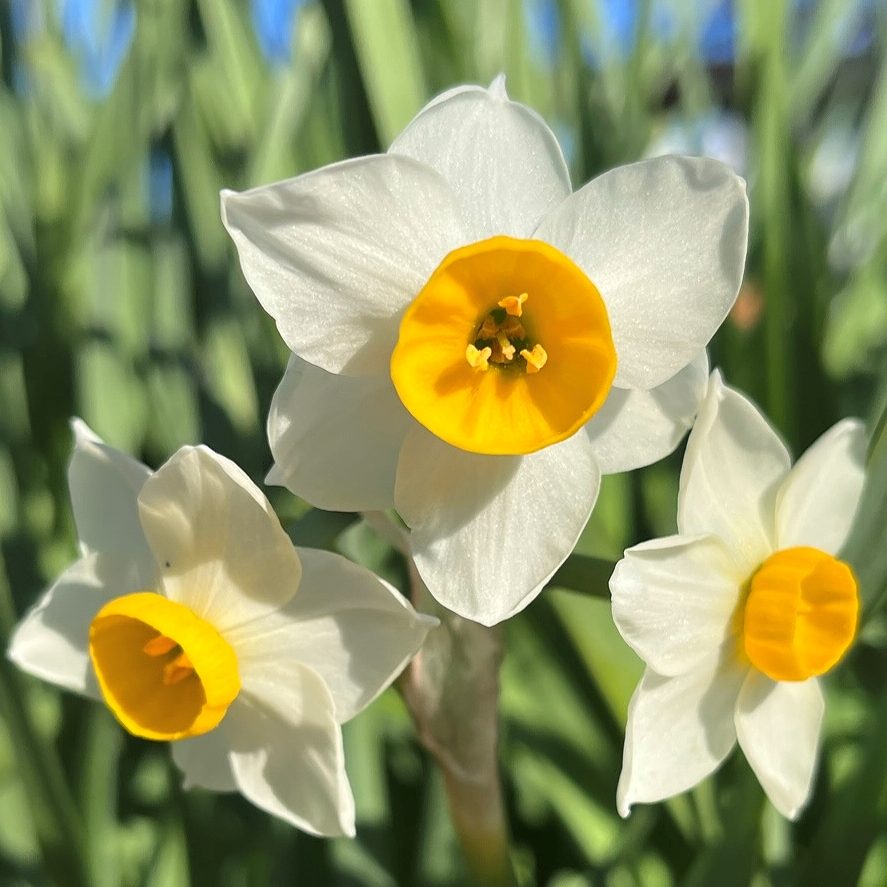スイセンは水辺に育ち、仙人のように寿命が長く、清らかな花だから「水仙」。花は芳香があり、副花冠が雄しべと雌しべを筒状に囲みます。
Narcissus grows on the water’s edge, has a long life like a hermit, and is a pure flower, so it is called “Water hermit”. The flowers are fragrant and the corolla surrounds the stamens and pistils in a cylindrical shape.
【仮名】スイセン
【和名】水仙
【英名】Narcissus, Daffodil
【学名】Narcissus
【誕生】01/ 02, 01/ 03, 01/ 13, 02/ 09, 02/ 16, 04/ 03
【開花】01, 02, 03, 04, 11, 12月
【花色】White, Yellow, Orange
スイセン
スイセンの来歴
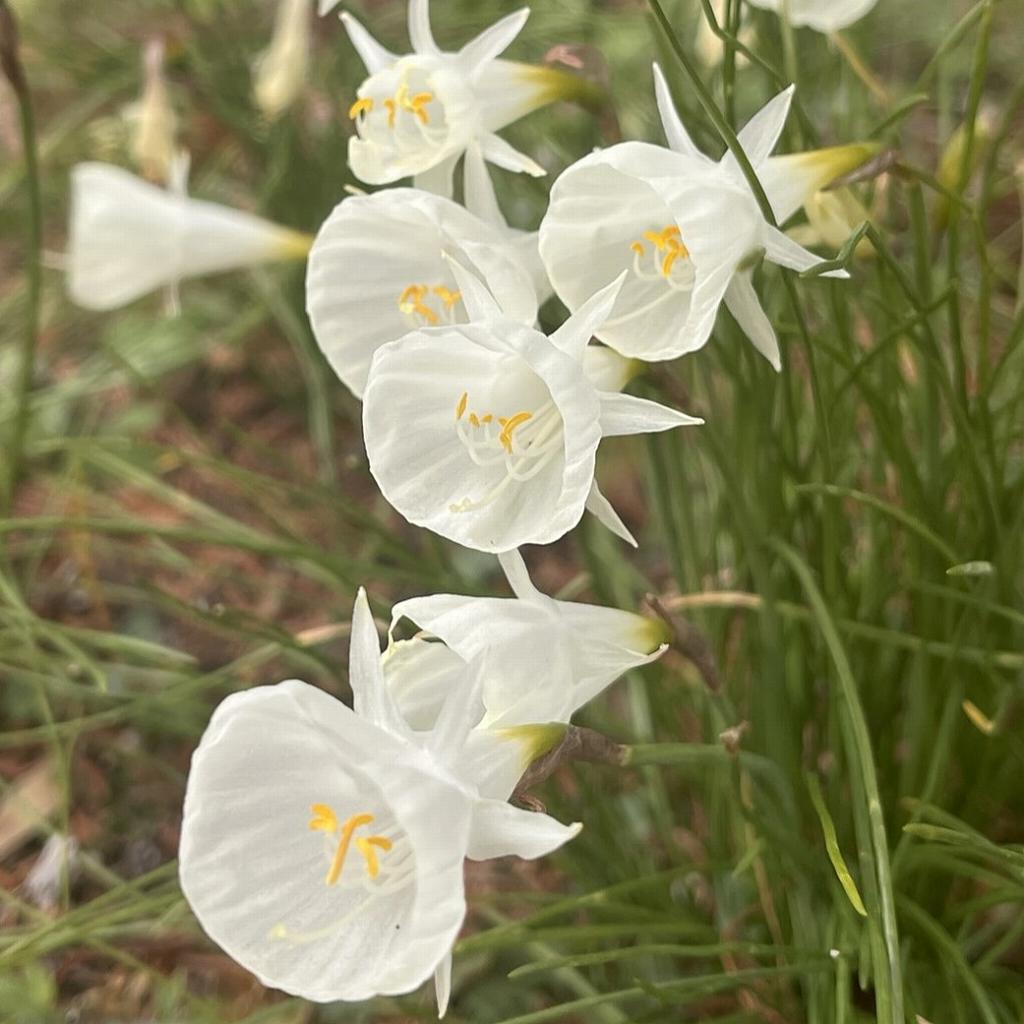
スイセンはヒガンバナ科の多年草です。原産地はイベリア半島を中心に、地中海沿岸から中央アジアまで。原種は30ほどあり、一部が中央アジアから中国、日本まで分布しています。日本へは、中近東からシルクロードを通じて中国に伝わり、室町時代に渡来。花には芳香があります。
スイセンの和名

スイセンの和名は中国名に由来し、「水の仙人」という意味。中国の古典で仙人は「天にあるを天仙、地にあるを地仙、水にあるを水仙」と形容されています。水辺に育ち、仙人のように寿命が長く、清らかな花だから水仙。スイセン属の多くの品種名に、この名称が付されています。
スイセンの英名
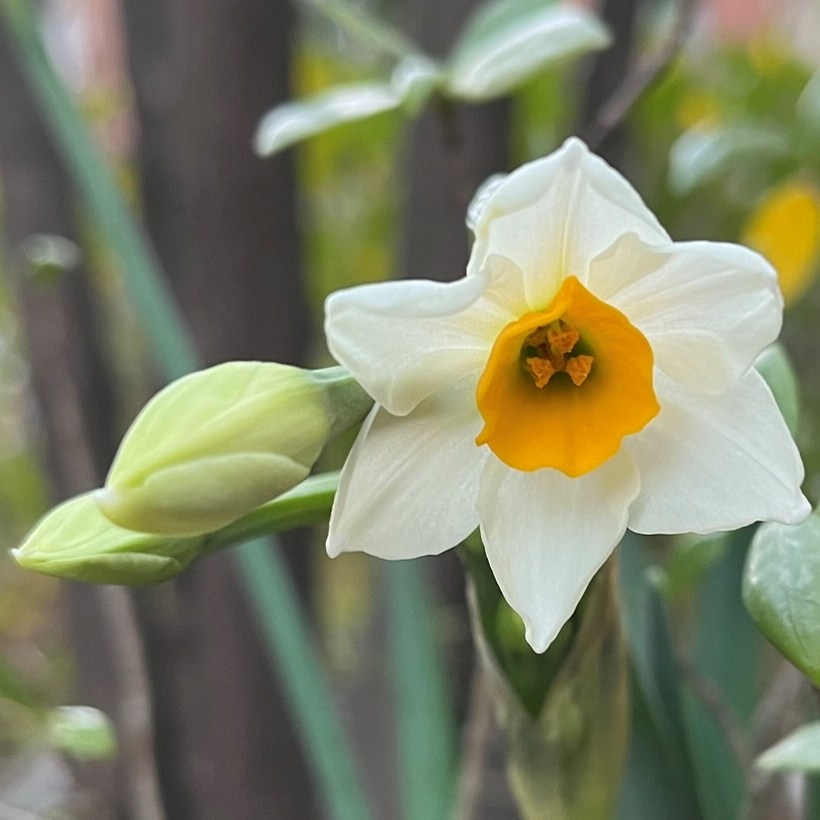
スイセンの英名「ナルキッソス」はギリシャ神話に登場する少年の名前。妖精のエコーは美しい少年に恋をしますが、その少年が相手にしてくれません。そのため、エコーは痩せ細り、声だけの存在に。女神アルテミスによって、少年は自分自身に恋をしてスイセンに姿を変えました。
スイセンの花容
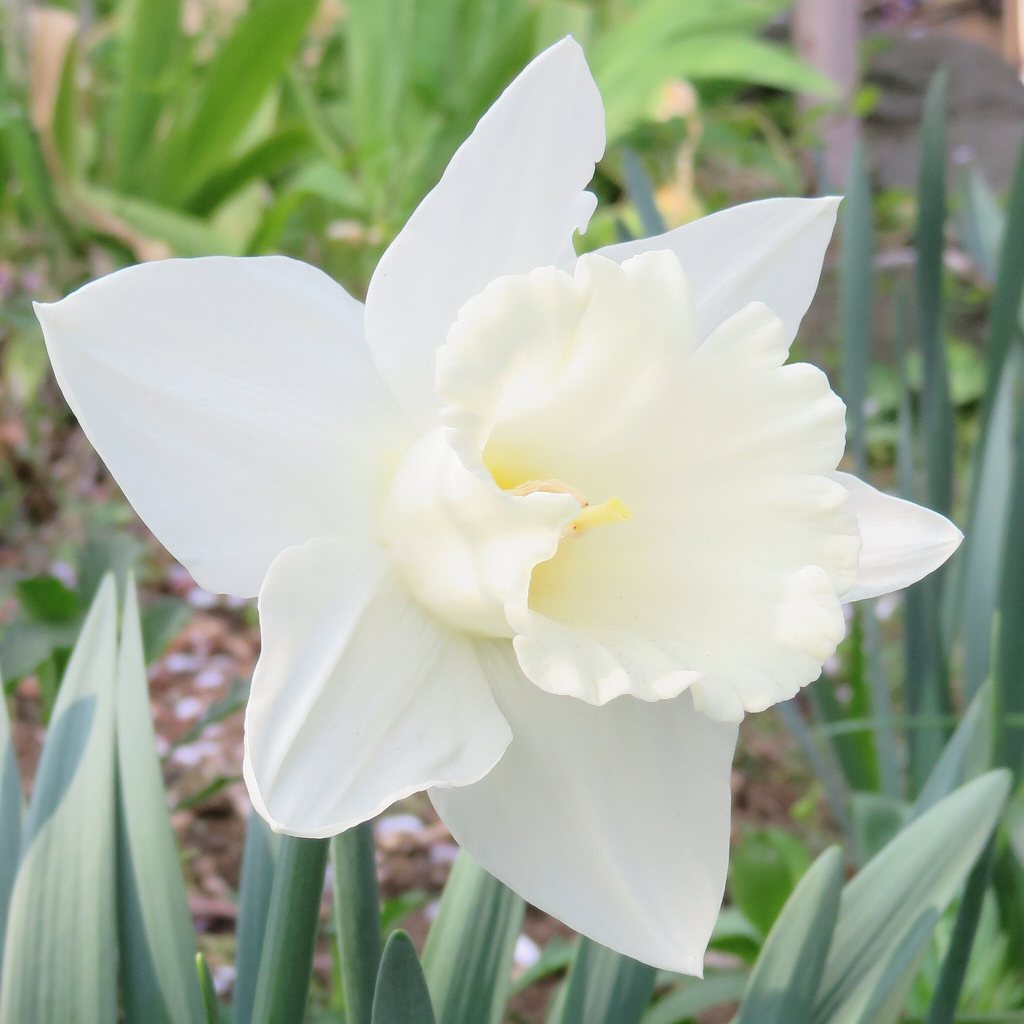
スイセンの花は上3枚が花弁、下3枚が萼片、雄しべと雌しべを囲むのが副花冠です。その長さによって「ラッパ咲き」「カップ咲き」「小カップ咲き」に分類。また、咲き方で「八重咲き」「トリアンドロス咲き」「シクラメネウス咲き」「スプリットコロナ咲き」などがあります。
スイセンの品種

スイセンの品種「日本水仙」は、日本という名称にも関わらず、原産地はイベリア半島。日本への伝来は、中国から漂着した球根が野生化したという説もあります。そのほか、副花冠が突き出ている「喇叭水仙」、ギリシア神話に登場する「口紅水仙」、花が黄色の「黄水仙」なども。
スイセンの毒性
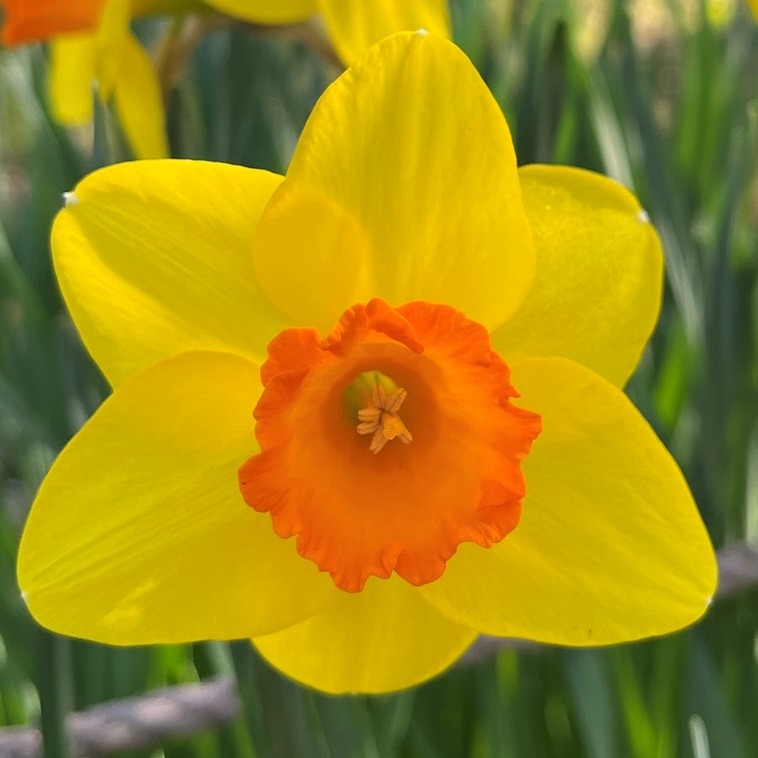
スイセンには毒性があり、有毒成分はリコリン、タゼチン、ガランタミンといったアルカロイド類です。中毒症状は嘔吐、発汗、頭痛、昏睡状態、低体温症など。葉がニラに似ているので家庭菜園での誤食事例が多く、特に有毒成分を多く含む鱗茎では、誤食による死亡例があります。
Narcissus
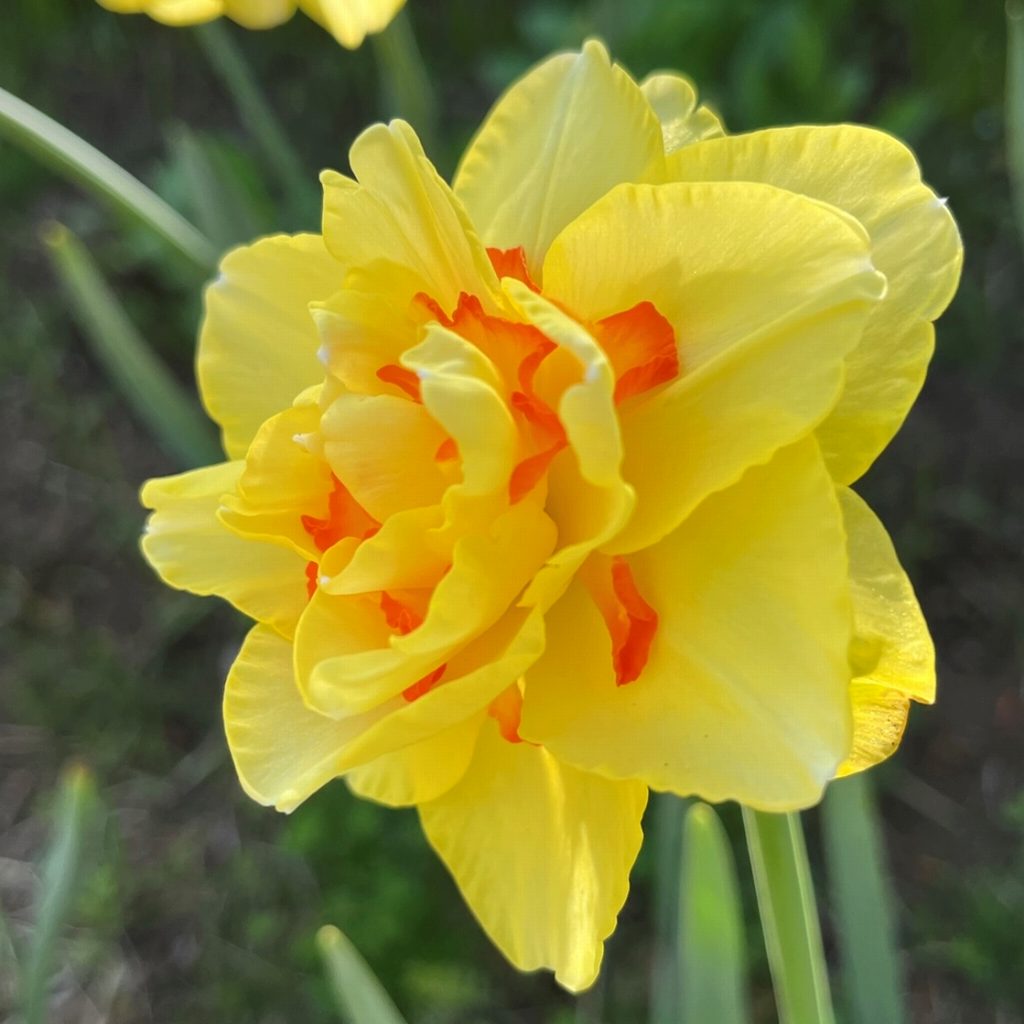
Narcissus is a perennial plant of the Amaryllidaceae family. The place of origin is centering on the Iberian Peninsula, from the Mediterranean coast to Central Asia. There are about 30 species, some of which are distributed from Central Asia to China and Japan. From the Middle East, it was introduced to China through the Silk Road and came to Japan during the Muromachi period. The flowers have a fragrance.
The Japanese name of narcissus is derived from the Chinese name and means “water hermit”. In Chinese classics, hermits are described as “Tensen in heaven, Chisen in earth, Narcissus in water”. Narcissus grows on the water’s edge, has a long life like a hermit, and is a pure flower. This name is given to many varieties of the genus Narcissus.
The English name for Narcissus comes from the name of a boy in Greek mythology. The fairy Echo falls in love with a beautiful boy, who doesn’t deal with her. Therefore, the echo is thin and thin, and only the voice exists. By the goddess Artemis, the boy fell in love with himself and turned into a Narcissus.
The upper three flowers of narcissus are petals, the lower three are sepals, and the stamens and pistils are surrounded by the secondary corolla. It is classified into “trumpet bloom”, “cup bloom” and “small cup bloom” according to its length. In addition, there are “double-flowered”, “triandros-flowered”, “cyclameneus-flowered”, and “split corona-flowered” depending on how they bloom.
The origin of the Narcissus variety “Japanese Narcissus” is the Iberian Peninsula, despite the name Japanese. There is also a theory that the bulbs that were washed ashore from China became wild when they were introduced to Japan. In addition, there are “Pseudonarcissus” with a protruding corolla, “Poeticus” that appear in Greek mythology, and “Jonquilla” with yellow flowers.
Narcissus is toxic, and the toxic components are alkaloids such as lycorine, tazetin, and galantamine. Symptoms of poisoning include vomiting, sweating, headache, coma, and hypothermia. Since the leaves resemble garlic, there are many cases of accidental eating in the vegetable garden, and especially in the bulbs that contain a lot of toxic components, there are cases of death due to accidental eating.

